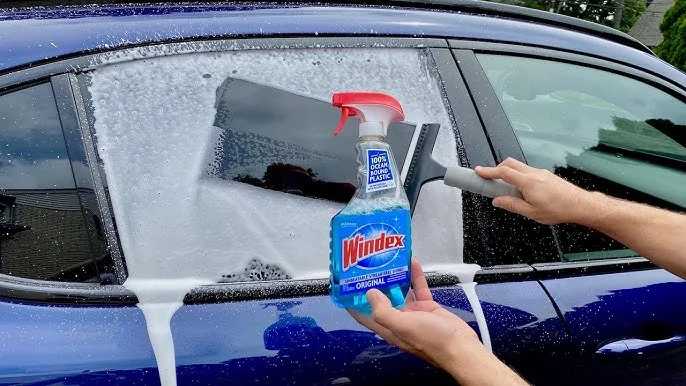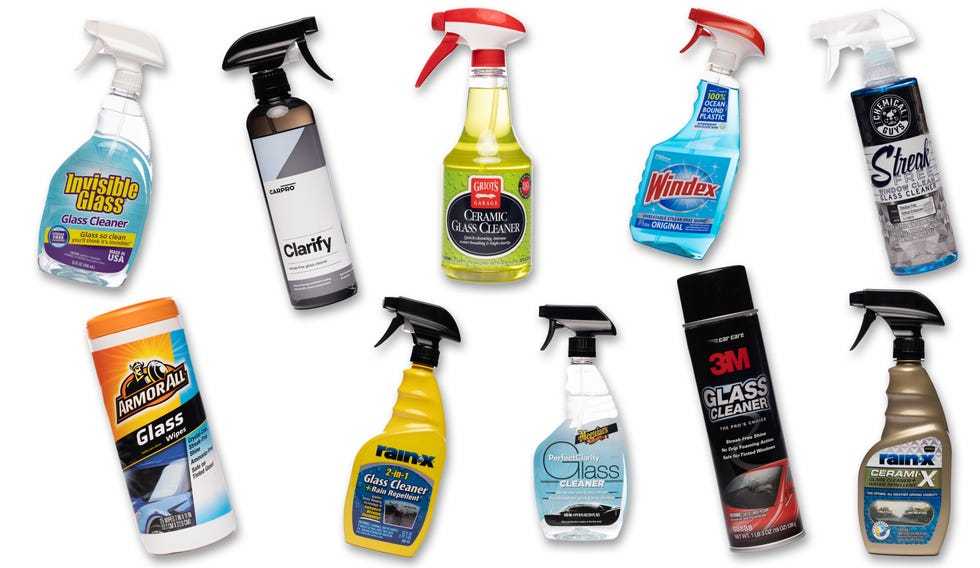The best car window tint depends on your needs, but generally, a high-quality ceramic tint offers the perfect blend of heat rejection, UV protection, and clarity. It not only enhances your vehicle’s look but also provides superior comfort and safety. For optimal performance, look for tints that meet local regulations and offer durability without sacrificing visibility.
In short, the top choice for car window tinting is a high-quality ceramic film, as it provides excellent heat and UV protection, durability, and maintains clear visibility. There are also other options like carbon and dyed tints, but ceramic tends to be the most beneficial overall. Choosing the right tint can significantly improve your driving experience, protect your interior, and keep you cooler on hot days.
Getting the perfect window tint for your car can seem overwhelming, especially with so many options available. You’re probably wondering which type best combines style, protection, and practicality. The truth is, the best tint isn’t just about appearance—it’s about choosing a film that offers maximum UV and heat rejection while remaining legal and safe. Whether you’re looking to block out glare, protect your skin, or keep your car cooler, understanding the different types of tints and their benefits is key to making an informed decision. This guide will help you navigate the options so you can enjoy a stylish, comfortable, and protected ride.
What Car Window Tint Is the Best?
Understanding the Different Types of Car Window Tint
Choosing the best car window tint starts by understanding the different types available. There are primarily three main categories: dyed, metallic, and ceramic tints. Each type has unique benefits and drawbacks that can influence your decision.
Dyed tints are the most affordable option. They use a layer of dye to reduce sunlight and glare. Metallic tints contain tiny metal particles that reflect heat and light, offering better heat rejection.
Ceramic tints are considered the top choice for high performance. They use ceramic particles that block heat and UV rays without interfering with electronic signals. This makes them ideal for drivers seeking the best combination of comfort and technology compatibility.
UV Protection and Its Importance
The best car window tint must block harmful ultraviolet (UV) rays. UV rays can cause skin damage and fade your vehicle’s interior. Ceramic tints provide almost 100% UV protection and are superior in this area.
Look for tints that specify UV rejection ratings. This feature not only protects your skin but also helps preserve the lifespan of your car’s upholstery and electronics.
High-quality tints typically block between 99% and 100% of UV rays, making them safer for everyone inside your vehicle.
Heat Rejection Capabilities
Reducing heat inside your car makes your driving experience more comfortable. The most effective tints can reject over 50% of solar heat. Ceramic films often outperform others here.
When evaluating heat rejection, look for specifications like IR (infrared) rejection percentage. The higher this percentage, the better the tint at blocking thermal radiation.
Heat rejection enhances fuel efficiency as your air conditioning system works less to keep the interior cool.
Visibility and Glare Reduction
Good window tint should improve visibility and reduce glare from the sun and headlights. Tints with higher darkness levels can sometimes compromise visibility, especially at night.
Many tints are rated with Light Transmittance (LT) percentages, indicating how much light passes through. For better night vision, choose a tint with a higher LT percentage.
Balancing glare reduction with visibility is key. Ceramic and high-quality dyed tints often provide this balance effectively.
Legal Regulations and Tint Darkness Limits
Each state has specific rules about how dark your car windows can be. These laws regulate the VLT (Visible Light Transmittance) percentage.
For example, some states allow a VLT of 35% on the driver’s side window, while others permit darker tints. Always check your local laws before choosing a tint level.
Choosing legal tints prevents fines and the hassle of removing non-compliant film later.
Durability and Longevity of Car Window Tints
High-quality tints last longer and resist fading and bubbling over time. Ceramic and metallic tints generally have better durability than dyed films.
Look for tints with manufacturer warranties that cover peeling, bubbling, or color fading. These warranties often span from 5 to 10 years, ensuring long-term performance.
Proper installation by professionals also affects the lifespan. Avoid cheap DIY films that may peel or discolor quickly.
Cost Considerations for Different Tints
The price of car window tints varies depending on the type and brand. Dyed tints are usually the most affordable, costing between $100 and $200 for an average vehicle.
Ceramic tints are more expensive, typically ranging from $300 to $800, but they offer superior heat rejection and UV protection. Metallic tints fall somewhere in between.
Investing in a higher-quality tint can save you money over time by reducing energy costs and avoiding replacements.
Installation Process and Best Practices
A professional installation ensures your tint looks good and performs well. Proper prep work includes cleaning windows thoroughly and applying the film smoothly.
Good installers use high-quality tools and techniques like heat guns and squeegees to prevent air bubbles and creases. This leads to a cleaner, longer-lasting finish.
Always ask for a warranty and ensure the installer complies with local tint laws to avoid legal issues later.
Additional Benefits of Choosing the Right Car Window Tint
Beyond heat reduction and UV protection, the best tint can offer privacy and security. Darker films can deter theft by making it harder to see valuables inside.
They also add a sleek, stylish look to your vehicle, enhancing its overall appearance. Some tints also reduce interior glare, making driving safer and more comfortable.
Remember, the right tint is an investment in your comfort, safety, and vehicle value over time.
Related Topics: Comparing Popular Tint Brands and Technologies
Popular brands like Llumar, 3M, and Solar Gard offer a range of high-quality options. Their ceramic and metallic films are highly rated for performance and durability.
Consider the technology behind each film: ceramic films tend to be more advanced with better heat and UV rejection. Some brands also offer features like added privacy and anti-scratch coatings.
Researching customer reviews and consulting professionals can help you choose the best brand for your specific needs.
Choosing the Right Tint for Your Vehicle
Start by understanding your priorities: Do you want maximum heat rejection, UV protection, privacy, or a combination? Your needs will influence the best choice.
Set a budget and compare different products within that range, paying attention to the manufacturer’s specifications and warranty coverage.
Finally, always opt for professional installation to ensure the tint performs well and looks good for years to come.
In conclusion, the best car window tint depends on your specific needs, budget, and local laws. Ceramic films generally offer the best performance for heat rejection, UV protection, and longevity. Carefully selecting a professional installer and choosing a tint that complies with regulations will give you the best results. Taking the time to research and pick the right tint can make your driving experience more comfortable, safer, and stylish for years to come.
How to Choose the RIGHT Window Tint | Don't Make A Mistake
Frequently Asked Questions
How does the quality of tint film affect its performance and longevity?
High-quality tint films typically offer better clarity, fade resistance, and durability. They use premium dyes or metalized components that prevent bubbling, cracking, and peeling over time. Investing in top-tier tint ensures your vehicle remains stylish and provides consistent protection for years to come.
What factors should I consider regarding UV protection when choosing a tint?
Choose a tint that blocks the majority of harmful UV rays, ideally above 99%. This protection helps prevent skin damage and keeps your car’s interior from fading or cracking. Look for films specifically labeled for high UV rejection for optimal safety and preservation.
Are there legal restrictions on the darkness of car window tint?
Yes, many regions set laws on the allowable tint darkness depending on the vehicle type and window location. Check your local regulations before choosing a tint to avoid fines or the need to remove or replace the film. Selecting a compliant tint ensures you stay within legal limits while maximizing your vehicle’s comfort and privacy.
What is the difference between dyed, metalized, and ceramic tint films?
Dyed films are affordable and reduce glare but may fade over time. Metalized tints contain tiny metallic particles that reflect heat and enhance privacy, yet they can interfere with electronic signals. Ceramic tints use advanced ceramic particles, offering excellent heat rejection, UV protection, and signal clarity without fading or discoloration. Consider your priorities to select the best option.
How does the color or shade of tint impact visibility and comfort?
The shade of tint impacts how much light enters the vehicle, affecting visibility and privacy. Darker tints provide more privacy and reduce glare, but may slightly decrease visibility in low-light conditions. Lighter shades balance privacy with visibility, making them suitable for drivers who prioritize both safety and comfort. Choose a shade that meets your needs and complies with local regulations.
Final Thoughts
Le car window tint idéal offre à la fois protection, confidentialité et style. La meilleure option dépend de vos besoins spécifiques, comme la réduction de la chaleur ou la confidentialité accrue.
Les films teintés en polyester de haute qualité avec une côte de réflexion élevée sont souvent préférés pour leur durabilité. Vérifiez aussi la législation locale pour éviter tout problème.
En résumé, what car window tint is the best ? La réponse réside dans un film qui allie performance, légalité et esthétique. Choisissez un film qui répond à toutes ces exigences pour un résultat optimal.



